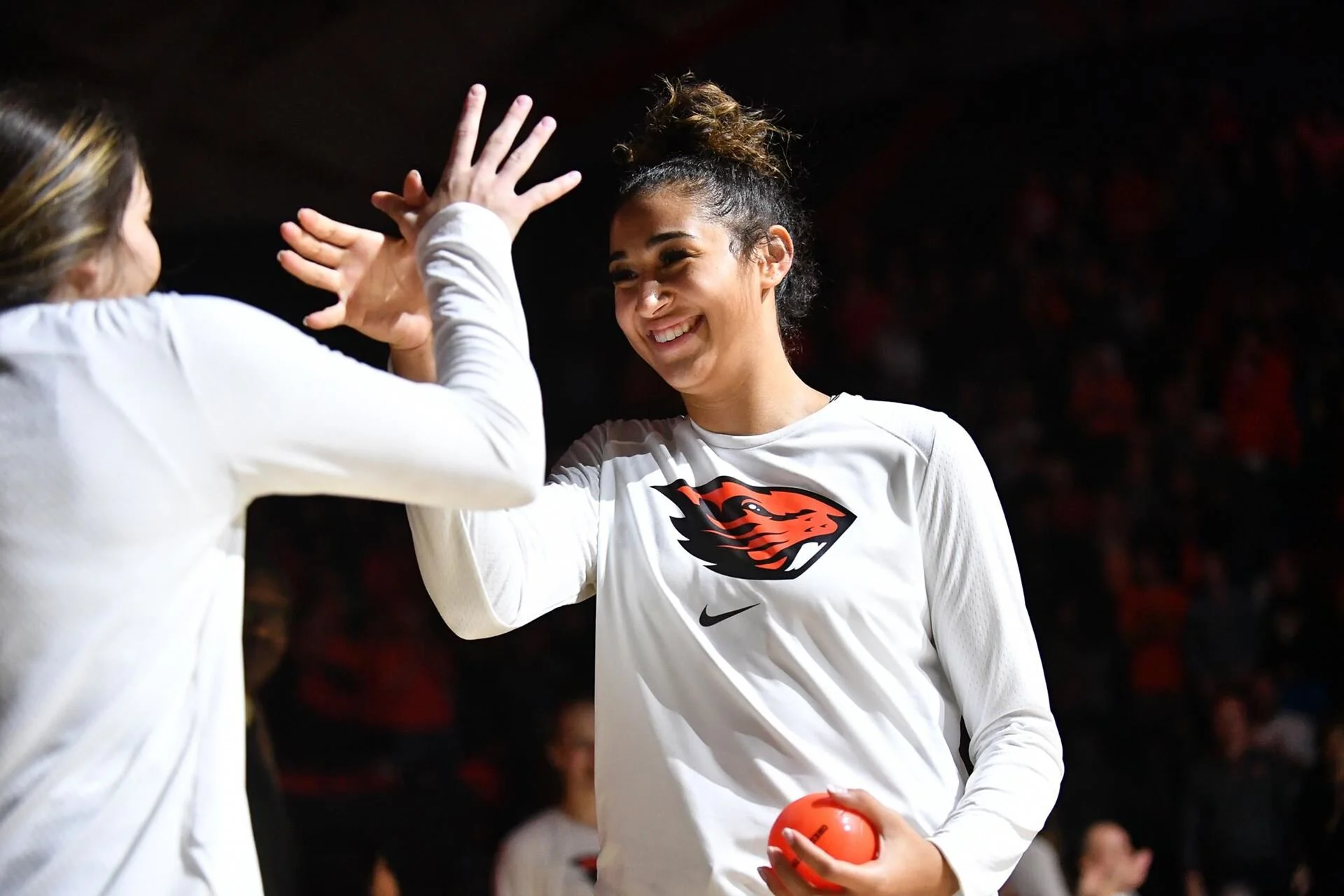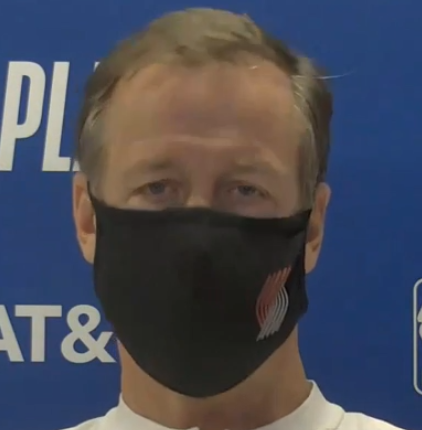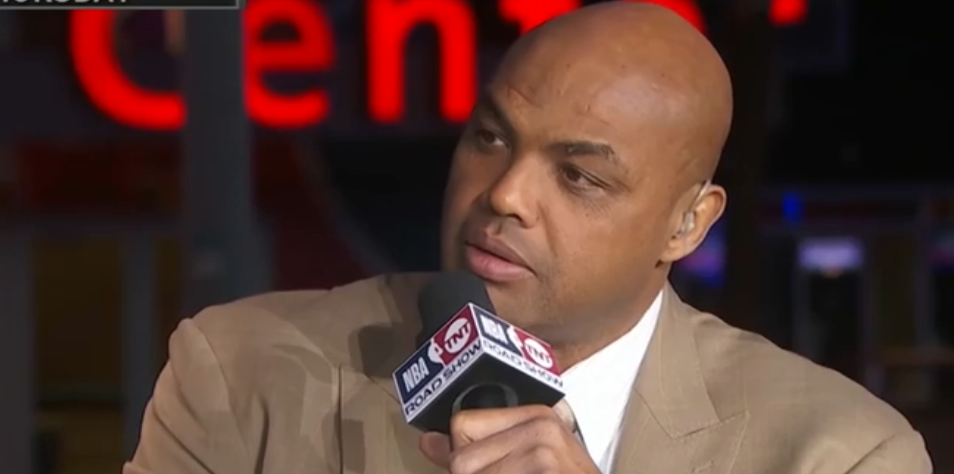On shoddy officiating, COVID’s impact and Pac-12 women’s hoops, along with a little Terry Stotts and Charles Barkley …
Reflections from ye old scribe on a few sporting subjects …
• I’m rarely one to criticize sports officials. I have friends who are referees and admire their integrity and intestinal fortitude. I umpired and refereed during my high school and college years. I believe those who work college and pro sports most often do a very credible job.
But what happened Saturday night in Seattle was nothing short of a travesty.
Referees miss spots at times; it happens. But with today’s technology and the ability to review, the ball generally gets spotted very close to where it should when it’s all said and done.
That didn’t happen during a critical juncture in the Oregon State-Washington game.
Trailing 24-21 early in the fourth quarter, the Beavers had the ball, third-and-inches at the Washington 5 after a long drive. Jermar Jefferson’s dive seemed to have gained enough for the first down. Alex Faust and Petros Papadakis — calling the game for Fox Sports — thought it was. OSU coaches were preparing a first-down play. The officials, though, brought out the chains. The Beavers were inches short.
The Beavers called a similar fourth-down play and Jefferson appeared to have gained first down by a comfortable margin. Again out came the sticks; short again.
My first thought was, “challenge the spot.” Coach Jonathan Smith said he was told by officials that reviews were being done on both plays.
“I don’t want to challenge (and risk losing a timeout) when they say they’re already looking at it,” Smith told the media after the game.
To be fair to Smith, he is watching the plays from the sidelines and doesn’t have the advantage of a better perspective via TV with its angles on replay. But even to the naked eye at field level, it had to be obvious that something was rotten in Husky Stadium.
Beaver fans couldn’t believe it. Faust and Papadakis couldn’t, either. (Petros delivered a great line later in the quarter when Oregon State took over at its 1-yard line after a UW punt. After B.J. Baylor’s three-yard run to the 4, Petros cracked, “With the spot, I thought it might be a safety.”)
Smith shows almost no emotion when patrolling the sidelines during games. He’s as undemonstrative a head coach as I’ve seen operate at the Pac-12 level. That’s a reflection of his low-key personality. Nothing wrong with that. In fact, it’s an advantage when he wants to get a point across to officials — they know he’s no raving maniac like some coaches.
If I’m Smith, though, after I’m told the review showed the Beavers had come up short, I’m not accepting that without a fight. I’m challenging it. And again. If I have to run out onto the field to get the referees’ attention and I draw an unsportsmanlike conduct penalty in the process, so be it (the Huskies would only have had the ball at their 20). You have to stand up for your team at times. This was one of those times.
On Sunday, Oregon State AD Scott Barnes reached out to the Pac-12 office to complain about the calls. Later that day, the conference issued a statement in which it announced there was “not irrefutable evidence” to overturn the ruling of on-field game officials. What, you want an affidavit signed by both coaches and Fox Sports rules analyst Mike Pereira?
The Oregonian’s John Canzano theorized that the replay crew was operating with a minimum amount of camera angles, which may be true. But in this case, it shouldn’t have mattered. The calls didn’t pass the eyeball test; the plays weren’t that close. The Pac-12’s tepid response doesn’t pass the smell test.
Husky Fan will say it wasn’t as if it happened right at the end of the game, which is true. The Beavers still had nearly a quarter to play and didn’t get it done in a 27-21 loss. But it sure appeared that they were going to score a touchdown, which would have forged a 28-24 lead and forced the Huskies to score a TD to win.
“It was a critical call,” Smith said during his Monday media conference. “But it’s like I told our (players), there were multiple times when we could make a difference. I’ve been coaching 20-plus years, and I don’t think there’s been one game where I felt like every single call went our way. We’re always going to deal with disagreements.”
Good on Jonathan that he’s not over-the-top bellyaching about it. In 45 years writing sports, though, I don’t remember many times when a team got hosed by the officials at nearly every turn as did the Beavers on Saturday.
OSU’s Caleb Lightbourn got undercut on a punt that was a blatant roughing-the-kicker infraction early in the third quarter. The 15-yard penalty would have given the Beavers first down at the Washington 32. Instead, it was ruled “running into the kicker,” a five-yard penalty which would not have been enough for a first down. OSU declined the penalty.
There was a third-quarter helmet-to-helmet hit by a Husky defender that Pereira said should have been flagged but, even after review, wasn’t. A little later, there was one called on OSU’s Kitan Oladipo that, while replay showed it was indeed helmet to helmet, didn’t seem as egregious as the one overlooked by the officials earlier. That one came on a third-and-18 play at the OSU 24 on the Huskies’ final possession. It gave them first-and-goal at the 5.
There’s no conspiracy here. A bunch of calls went the Huskies’ way and they won a close game. But there’s too much at stake for both teams to just let it go without some oversight and correction, so this kind of thing doesn’t happen again — at least in the next 45 years.
• Smith announced Monday that the four players under quarantine for the Beavers who missed the UW game — including starting safety David Morris and reserve linebacker Kyrei Fisher — will not be available for Saturday’s home date with California. Too bad, but it beats the game cancellations that have beset a few of the Beavers’ Pac-12 brethren so far.
UCLA and Cal had 43 hours notice before squaring off Sunday at the Rose Bowl, a game the Bruins won handily 34-10. Utah, one of the league’s preseason favorites, has been hammered by positive COVID-19 tests. Seems like all of college football is tiptoeing around trouble waters these days.
Taya Corosdale (source osubeavers.com)
• The Pac-12 released its weekly matchups and site designations for the upcoming women’s basketball season, and there’s good news on the local front. Oregon State will play host to Oregon the week of Dec. 10-14, while the Ducks will be the home team in a rematch between Feb. 26 and March 1.
For the past several years, the teams have had their two annual meetings within a few days of each other. That was simply not fair to two of the nation’s premier programs, with the emotions high and so much riding on the outcome. The other part of it was, if one team had a key player or two out due to injury, she was likely to miss both games. That would be much less likely to happen if the contests were more adequately spread through the season.
Terry Stotts (source nba.com/blazers)
• In a recent conversation with Blazers coach Terry Stotts, I mentioned how surprised — and impressed — I was that the bubble worked so well for the NBA in the restart portion of the season in Orlando.
“Me, too,” Stotts said. “I told the team before it started, it’s important for us and the league, but in some ways it’s historical if we can pull this off and be an example. The NBA did an outstanding job pulling it off. Everybody involved — players, coaches, administrators — had a part in that.”
Charles Barkley (source nba.com/blazers)
• Finally, Charles Barkley enjoys telling the story about how he tried to get the Blazers to trade for him during the summer of 1991. Portland had just been eliminated by the Lakers in the Western Conference finals after compiling a league-best 63-19 regular-season record, the season between NBA Finals appearances.
“I thought they had the best home-court advantage in the NBA,” Charles told me last weekend. “They were loaded. It was a nightmare playing against them.”
Barkley, then with the Philadelphia 76ers, says he called Geoff Petrie, Portland’s vice president/operations at the time.
“I told Geoff, ‘I really need to sit down with you face-to-face and talk,’ “ Barkley says. “Then I flew to Portland in the middle of the summer on my own dime. Didn’t tell anybody in the world.
“We sat down and talked for a couple of hours. I told him, ‘You’re one of the few teams that can give up enough players to get me. The only weakness, you can’t score in the half-court when the game is on the line in the playoffs. That’s my specialty. I don’t care who you give up, I’ll still have enough (talent) here to win a title.’ He said,
‘We’d love to have you, but I’m not sure what it would take.’ I told him, ‘Do whatever it takes.’ ”
Barkley says Petrie called back a few days later.
He said, ‘We’re going to stick with what we got,’ “ Barkley says. “I said, ‘No hard feelings,’ and the rest is history.”
Barkley was 27 then, beginning the prime of his Hall of Fame career. After the 1991-92 season, he was traded to Phoenix, with whom he won the NBA’s Most Valuable Player Award in leading the Suns to the NBA Finals in 1992-93.
Let’s say Petrie gives up Buck Williams, Jerome Kersey and two first-round draft picks for Barkley — or instead or Kersey, Cliff Robinson. That would have been a nice bounty for the 76ers.
The Blazers, though, would still have had Clyde Drexler, Terry Porter, Kevin Duckworth, either Kersey or Robinson and Danny Ainge to go with Barkley. Think that would have been a formidable enough group to win a title or two?
I do.
Readers: what are your thoughts on the points I touched on here? Does the Pac-12 have an officiating problem? Share your comments below.
Reach out to Kerry Eggers here.
Be sure to sign up for my emails. Our new contest will have The Mayor of Rip City Bill Schonely record your voice mail greeting and an opportunity to chat with the Blazers legend. It is free, and all current subscribers are eligible to win.




